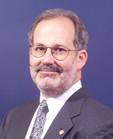Progressive Voice is a weekly opinion column. The views and opinions expressed in this column are those of the author and do not necessarily reflect the views of ARLnow.com.
Throughout the country, we are seeing a strong trend for younger workers and older suburban homeowners to choose to move to transit-oriented communities.


